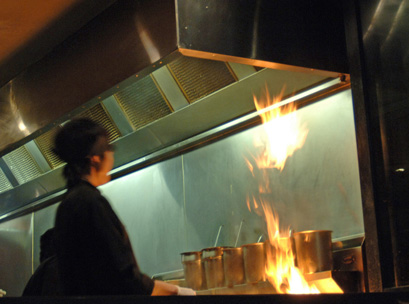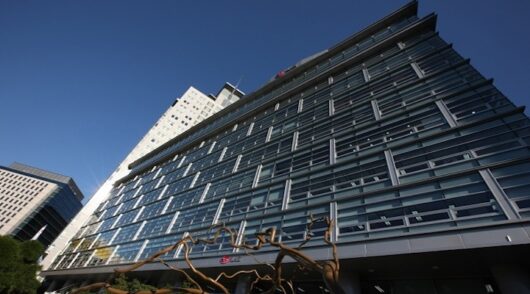Dining in restaurants across Asia is always an interesting experience. New taste sensations, exciting decor and ambience and of course the different cultural influences on customer service can make dining a unique experience for which the customer is happy to pay.
Whilst the dining experience can be sensational with ambiance, food selection and service all exceeding expectations there are many, (I am tempted to write in the “majority” of), times when because of an unusual attitude to service the customer is frustrated and disappointed and at the same time the restaurant loses significant additional easy sales.
Yes it is true, the customer wants to spend more money – and if only they could, they would leave the restaurant happier.
In tough times when the world’s economy is in turmoil and too many business owners/managers complain that making money is way too hard, it is amazing that sometimes the easiest of solutions is right in front of them, yet they cannot see it.
These are the typical service steps in way too many restaurants:
- Friendly, smiling staff greet you and assist you to be seated quickly and efficiently.
- Menus are speedily provided and waitress/waiter stands waiting to take your order.
- Food and drinks are usually delivered punctually and presented with a smile.
- When it is time to pay your bill you will wave your arms to attract staff attention.
- As you depart staff members and door people will thank you for dining with them.
Hmmm, that all sounds OK you may be thinking. But hang on: you shouldn’t have to wave your hands to attract the attention of staff so you can pay your bill! Yes that’s true but given when you are ready to pay the bill it is too late to add to the total sale that cannot be the hidden secret!
What is the hidden secret?
Granted, it is hard to see the opportunity by just looking at the service steps above, but I assure you when you are in the restaurant the missing service element will be painfully obvious.
Here it is… once your initial food order is delivered you will never see your waitress or waiter ever again. It seems the training (or lack thereof), instills in staff their job ends as soon as your food is delivered. Doesn’t matter that you may like to order another drink or a dessert – this will all too often only be possible if you wave your arms around to signal you would like service staff to attend your table one more time.
Now if you enjoy a couple of drinks with your meal, be prepared to repeat the arm waving aerobic exercise each and every time you want to place a new order.
Often at the time of placing your initial order the service staff member may enquire if you would like to place your dessert order but if you decline up front it is most unlikely that your waitress or waiter will return voluntarily to see if indeed you would like to order dessert after you have eaten your main course.
Observing the “aerobic arm waving” that appears repeatedly table by table around the restaurant substantiates this is not just an isolated incidence but is actually the standard approach to service once the initial meals have been delivered.
What is the potential in additional add-on sales?
Assume there is a party of six diners each ordering a main course with an average value of $9 plus a $3 drink then the bill will total $72. If this party would have ordered three x $4 desserts and three more drinks had they received customer service, then the additional sales would total $21 taking the total bill to $93.
In this example the bill increases by a whopping 29 per cent!
OK, so not every table will sit passively and go without ordering desserts and more drinks but on average if one in three tables give up on the service then the impact on the total restaurant revenue is close on 10 per cent. Now consider this: an extra 10 per cent with no impact on wage or operating costs so once costs of goods are subtracted the balance is pure profit!
The opportunity is even more attractive in a licensed restaurant as it is drink reorders that offer possibly the greatest add on sales – and drinks are usually the most profitable items on the menu.
Still doubting this is an easy way to increase the bill total? Even if the guests are active in “arm waving” to reorder drinks the number of drinks consumed is very likely to be less than would be consumed with attentive customer service. Therefore, in our example if we presume just one member of the group could have ordered one more drink this still represents a base bill increase of $3 and that is add on sales of 3.2 per cent.
How easy is it to grab these sales and put them in the register?
The good news is it is very easy to grab these additional sales. All that is required is a change in attitude to the issue of “follow up” table service, creating a service policy and procedure and teaching staff why it is important and showing them how to do it. Once completed there will be immediate benefits able to be measured in increased sales. Yes this requires training and management reinforcement but these are low cost investments.
The change management needs will include:
Explain to staff why service extends beyond the meal delivery and train them in the art of adding on sales.
Train staff to “walk with their eyes open” watching for signs that another order awaits – for example, diners have finished their main meals and might be ready to order desserts or their glass is nearly empty, indicating a repeat drink order may be possible.
This change to repeat table service visits delivers win – win – win outcomes:
- Customers win because they leave happy after enjoying a great dining – service experience.
- Staff win because they will earn increased tips because happy customers pay higher tips and if their new skills increased the average return per table sitting they will increase their employee value to the business.
Business wins and is the big winner because:
- Higher sales and profits are achieved.
- Staff are loyal and hard working because rewards are higher.
- Happy customers will return and that increases restaurant seat demand.
Remember even in tough times people still love to escape misery by having an enjoyable dining experience. So in summary in tough times a restaurant is still in a great position to not just survive but grow the business in real terms of sales and profit.






